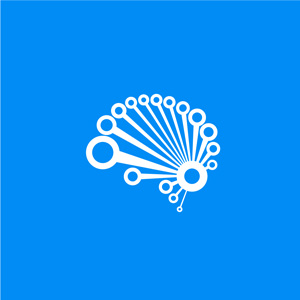The ultimate learning path guide detailing all the skills, knowledge and training you need to become a statistician
If mathematics and data “float your boat”, then a career as a statistician might be just what you’re looking for.
Statisticians often work alongside other data specialists such as data scientists, machine learning engineers, and business intelligence analysts. A large part of their role may be to help interpret, prepare and present data, but they are often employed to add mathematical muscle to a data science team.
A good statistician will have a deep overall knowledge of the statistical branch of mathematics, strong problem-solving skills and an interest in technology.
Statisticians have been around for a long time and it’s often considered one of the old traditional careers. Despite this, there is still a high demand for statisticians. The US Bureau of Labor Statistics predicts it will be the sixth highest growth career over the next 10 years.
What does a Statistician do?
The role of a statistician can be quite varied, depending on the demands of the employer.
Here are a few examples:
- Tech businesses may need a statistician to design algorithms that harness data for a product or to produce business insights.
- Polling companies need statisticians to design fair and unbiased surveys, analyse the resulting data and prepare a variety of data visualizations for different audiences.
- Subscription services such as Netflix or Spotify use statisticians and data scientists to segment data, create algorithms and prepare data for features such as recommendation lists.
- Social media sites such as Facebook and Twitter employ statisticians to build models using R (a statistical programming language).
- Government agencies recruit statisticians to compile and analyze data, as well as carrying out simulations, creating models and algorithms, etc.
- Manufacturing companies may hire statisticians to analyze operational data, build models and help to increase productivity.
This is just a brief list of the types of things statisticians do. The truth is, wherever there is data (especially large amounts of data), statisticians are needed.
Statistician Job Prospects and Salary
If you’re seriously considering a career as a statistician, there’s some good news. Statisticians are in high demand. In April 2019, USA Today placed statistician as the number 5 job in the USA, for the following reasons:
“Very good work environment, very low stress at work and very good projected employment growth – making it one of very few careers to receive the highest marks available for all three categories.”
Statisticians add a tremendous amount of value to a business, which is why they are reimbursed well for their efforts. The average salary for a statistician is $83,000, with senior statisticians earning $100k+ per year.
Steps to Becoming a Statistician
1. Gain Qualifications
To get the mathematical knowledge and skills you need to be a statistician, you’ll need a minimum of a graduate degree in a related subject. A bachelor’s degree in Mathematics and Statistics is the most common starting point.
Many statisticians go on to study for a masters or PhD in topics such as applied statistics, statistical programming or variance model analysis. If you are already working in a data-related or tech job and you’re want to switch over to being a statistician, you may be accepted with a degree in another mathematical field such as engineering or physics.
Once you have completed your degree and you have an idea of the type of statistician role you’d like to specialize in, then it’s a good idea to take some specialist courses such as Python or R programming or advanced database design.
E-learning platforms like SuperDataScience offer the best way to further your studies into statistical areas that employers are looking for.
2. Develop Skills and Knowledge
You will need to develop both technical and personal skills to have a successful career as a statistician. As with most jobs these days, you need to constantly update your knowledge throughout your career. Here are some of the technical skills you may be expected to have:
- Python programming to design and build algorithms
- R programming for statistical modeling and simulation
- SQL to build and manage complex databases
- Business analytics skills to generate insights
Most statistician roles advertised on job websites these days require skills and experience with some form of statistical programming language, such as R. Without statistical coding skills you may struggle to find a statistician job, especially a higher paying one.
As well as technical skills, you should also work on developing soft skills such as:
- Teamwork and communication – you may be expected to work as part of a data science team, so you must develop your interpersonal skills.
- Attention to detail – accuracy is important to maintain data integrity. You should be able to check your own work critically.
- Problem-solving – creating algorithms and statistical models can be quite challenging, especially when dealing with large, diverse data sets.
- Resilience – working as a statistician demands high levels of concentration and persistence.
- Adaptability – the technological landscape is constantly changing, which means statisticians need to frequently acquire new knowledge and learn new skills.
3. Build a Portfolio of Work Experience
Gaining work experience and logging it in a professional portfolio is a good way to showcase your skills and to demonstrate a proactive attitude. This will set you above other candidates when applying for jobs.
Work experience doesn’t necessarily mean employment. Any projects you do that involve statistical work can be included in your portfolio. This includes:
- Courses – online or live courses often include exercises and mini-projects. You will often receive a certificate on completion, which can be included in your portfolio.
- Workshops – study sessions or group projects that are focused on specific skills are great to include as they demonstrate a deep knowledge of the topic.
- Paid or unpaid work – once you reach a good level of expertise through studying, you begin to apply your skills. You may get an internship or work free for a voluntary organization to gain experience. Another possibility is to do some small freelance projects on the side, through websites such as Upwork.
- Extensive reading or extra study – any extra solo studying or reading you do can be included. This shows initiative and a passion for the subject.
- Related hobbies or interests – maybe you enjoy coding simple games or playing chess at a high level. Any hobby that demonstrates any of the skills mentioned previously is good to include (problem solving, resilience, attention to detail, etc).
There’s some good news if you decide to enroll in any SuperDataScience courses. You will get a professional portfolio created for you, that automatically updates with any specialist workshops you take part in. Click here to find out more about our courses.
Specialist Statistician E-learning Courses
Now you know the knowledge you need to gain and the skills you need to develop, the next question is how do you go about getting them?
At SuperDataScience, we offer a wide-range of courses related to the role of a Statistician. Although the courses are in-depth and high level, our aim is to make complex subjects simple to learn.
SuperDataScience Ultimate Learning Path
Our unique Ultimate Learning Path is the most comprehensive e-learning syllabus available for statisticians. You’ll get all the knowledge and skills required to become a fully-qualified statistician.
In fact, you’ll cover everything that would be included in a Statistician Master’s course at a college or university.
You’ll receive a completion certificate for each course, and any specialist workshops you participate in will be added to your professional portfolio.
Here’s a brief outline of the courses you need to cover to develop the skills needed to become a statistician.
Hands-on and practical course that gets you applying statistics to real-life business situations right from the get-go. This course will put you head and shoulders above the competition.
You’ll be able to demonstrate in-depth knowledge of how statistical rules, tests and theorems can be applied directly to real problems.
Topics covered include:
- Z-tests
- Central Limit Theorem
- Hypothesis Testing
- Confidence Intervals
- Statistical Significance
R programming is pretty much essential to landing good statistician jobs these days.
This course will get you to a professional level, enabling you to set up simulations, perform deep analysis and create data visualizations using R.
Learning R can be difficult. There is a steep learning curve. That’s why we’ve spent a long time developing this course to take you from complete beginner to professional in a gradual, step-by-step way. By the end of the course you’ll be able to:
- Understand the Fundamentals of R
- Build Functional Programs
- Create Matrices
- Build Data Frames
- Create Visualizations
- Solve Data-related Problems Using R
This course will take your R Programming skills to the next level!
The depth of knowledge you’ll acquire in this course will make you irresistible to employers that rely on complex data analytics.
The course is designed by experts with years of industry experience in analytics and data-mining, with practical exercises and projects that are related to real-life. You’ll learn:
- Data Preparation for Analysis
- Median Imputation Method
- Date-times in R
- Lists in R and how to use them
- Family of Functions
- Alternatives to Loops
- Functions Nesting
- Much, much more!
The most practical, hands-on and real-life data science course available today.
With a strong focus on problem solving, this data science course gives lets you experience what it’s like to work in the data industry as a statistician.
Nothing is left out. Corrupt data. Anomalies. Irregularities. You name it – it’s in there! This complete data science includes:
- Introduction to Data Science
- Creating Data Visualizations
- Data Modelling and Analysis
- Data Preparation
- SQL
- Communicating Data
- Plus much, much more
Let’s face it – anyone who works with data needs to understand how to design and use databases. This means that SQL skills are a must-have.
This course dives deep into database design and SQL, giving you all the database skills you’ll need in your career as a statistician, including projects and exercises related to real-life situations.
This will put you ahead of other job candidates who may not know how to design databases or even how they are structured. You’ll master:
- SQL Basics
- Working with Data
- Database Theory Fundamentals
- Joining and Creating Tables in SQL
- Database Design
Python is one of the most popular programming languages right now, mainly due to its versatility. It’s especially useful for statistical and data analysis and visualizations.
This course gives you step-by-step instruction in how to code with Python, as well as plenty of real-life analytical challenges and mini-projects to work on. This course includes:
- Core Programming Principles
- Python Fundamentals
- Creating Matrices
- Building Data Frames
- Advanced Visualizations
Become a Skilled Statistician – Begin Today
If you want to become a professional statistician, you can start today with our comprehensive courses.

